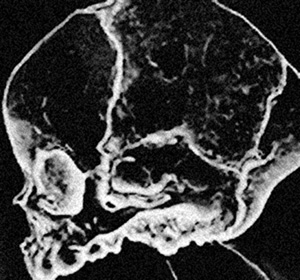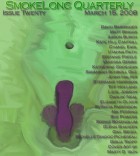Shortly after his wife became pregnant again, David began to have a series of dreams, all similar in character and all repeating sequentially. In fact, they were unfailingly methodical in their rotation.
In the one that especially affected David, he found himself wandering from the street into the Constitution Avenue entrance of the Natural History Building. Inside, he instinctively knew to turn left and to climb four long flights of marble stairs, worn low in the center by decades of passage. He gradually rose above the shrill voices of children, of cross mothers, above the heads of fathers staring impassively at glass vitrines filled with scintillating minerals. Finally, at the top, he found himself at a door behind which a warren of darkened drawers stood. The filing system extended from floor to ceiling. Behind the antiquated door, which had not been locked, the smell was stale and moldy, odors associated with old buildings and accumulated dust.
To David’s left were drawers containing the remains of early hominids. First there were the australopithecines. He saw A. afarensis AL 129-1 and then, walking further, A. africanus, AL 333-45 in crisp typescript beneath the tarnished brass pulls of one column of drawers… He wandered on, past rows ordered nominally and numerically: Olduvai hominid, OH 7; Homo habilis, KNM ER 1813; Homo erectus, Trinil 2, NG 6, and Sangiran 2.
As he neared the end of one wall, at approximately waist height, he saw four drawers colored differently than the rest. While everything else in the area was painted a turquoise green, which David identified as the result of a now outmoded 1950s-era renovation, these four drawers were a deep wine color. On the small three-by-five card in the corner of each drawer was lettering typed by what appeared to be an old automatic-return Smith-Corona. It said: “Homo sapiens, Clone Set 2, see drawer 17-a-12.” His fingertips touched one of the brass pulls, and after some hesitation created by the drawer’s weight and his uncertain force, it slid open. Inside were shin bones, a mandible, a tiny misshapen skull, whose bone density seemed too insubstantial to provide any true protection for the brain. The fingers looked more like the structure of a pterodactyl’s wing than a human hand. Several small molars rolled over the felt cloth lining the drawer. David stepped back. It came to him in one instantaneous, horrifying realization. This was his son. He looked again at the identifying three-by-five card. It now said, “Steadman, Homo sapiens, Clone Set 2, see drawer 17-a-12.”
A noise at his right made him turn his head. Initially, he thought the sound was someone’s breath, but he eventually recognized it to be a quiet whisper, a genderless murmur that lacked feeling but carried a pointed urgency. Down the dark hallway at his right, where he had initially seen nothing, he began to observe the manifestation of something… perhaps the accumulated dust… it swirled and formed, dispersed and rematerialized. He felt his heart begin to race, sweat abruptly beaded on his upper lip and forehead. He backed up further, when he felt its force. It had an energy he could not fathom. The hair on his arms and neck lifted. A chill passed through him. When his eyes focused once more, he saw that it had become a composite of faces and bodies: little girls, old men, middle-aged women. He could not determine all that was there. It was neither old nor young. It was neither short nor tall. It was, David seemed to understand, an expression of the infinite.
It continued to murmur, so low and regular it sounded like the buzz of a fluorescent light. And then, one voice emerged from behind the screen of all the others. It was a child’s, a girl’s. It said: “Look at your sons’ palms, David. Focus on the creases. Tell me what you see.”
And then it was gone. Each time, David woke up, sweating, breathless.



 The core workshop of SmokeLong Fitness is all in writing, so you can take part from anywhere at anytime. We are excited about creating a supportive, consistent and structured environment for flash writers to work on their craft in a community. We are thrilled and proud to say that our workshop participants have won, placed, or been listed in every major flash competition. Community works.
The core workshop of SmokeLong Fitness is all in writing, so you can take part from anywhere at anytime. We are excited about creating a supportive, consistent and structured environment for flash writers to work on their craft in a community. We are thrilled and proud to say that our workshop participants have won, placed, or been listed in every major flash competition. Community works.